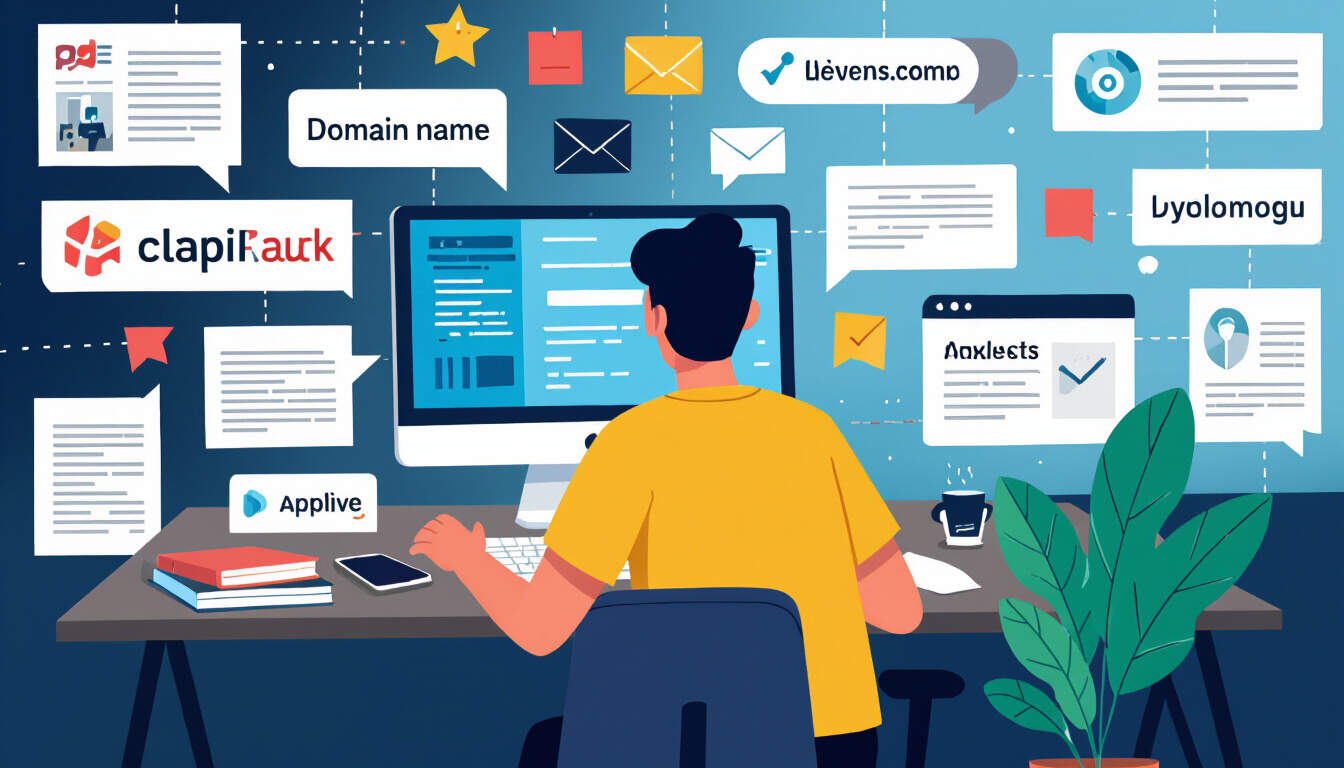Effective Domain Selection for Solo SaaS Builders
 by Verner Mayer
by Verner Mayer
Selecting the right domain is essential for solo SaaS projects, influencing branding and visibility. This guide covers key steps, practical tips, and examples to help you choose a domain that supports your business goals, ensuring long-term success.

Domain selection plays a vital role in building a solo SaaS product. For solo entrepreneurs, picking the ideal domain can set the foundation for your online presence and user trust.
In the early stages of development, developers often overlook this step, but it influences how users perceive your SaaS offering. A good domain should be memorable and easy to spell, making it simpler for customers to find and remember your service.
To start, begin with brainstorming. Think about your SaaS product's core function. For instance, if you're creating a tool for project management, words like 'task' or 'organize' might come to mind. Write down several options that reflect your brand.
Next, check availability. Use simple online tools to see if the domain is free. Aim for .com extensions as they are most common, but don't ignore .io or .app if they fit your niche.
Consider length as well. Shorter domains are preferable because they reduce errors. For example, a solo developer named Alex created a note-taking app and chose 'Notely.app' for its brevity and relevance.
Branding is another key factor. Your domain should align with your business identity. If your SaaS targets creative professionals, select something that evokes innovation, like 'CreateFlow.com'. Real-world examples show that domains matching brand names lead to better recognition.
Avoid numbers and hyphens where possible. They can confuse users and hurt SEO efforts. In one case, a developer switched from 'My-App-1.com' to 'MyApp.com' after realizing the original was hard to share.
Now, let's outline a step-by-step process for domain selection:
-
Define your objectives: List what your SaaS does and who it serves. This helps narrow down ideas.
-
Generate ideas: Use keywords related to your product. Tools like domain generators can suggest variations.
-
Evaluate options: Check for availability across extensions. Ensure the name isn't trademarked.
-
Test for usability: Say it out loud and type it to confirm it's user-friendly.
-
Secure it quickly: Once decided, purchase the domain to prevent others from taking it.
Practical advice includes considering future growth. If you plan to expand your SaaS, choose a domain that allows flexibility. For example, a solo builder of a fitness app started with 'FitTrackr.io' and later added services without changing the base name.
SEO benefits are important too. Domains with relevant keywords can improve search rankings. Include terms that potential users might search for, but keep it natural. In practice, a developer for an email tool used 'MailSync.com', which helped in organic traffic.
Common challenges arise, such as finding that your preferred domain is taken. In these situations, get creative with alternatives. One entrepreneur added a word like 'Pro' to make 'DesignPro.net' work.
Protect your investment by registering variations. Buy similar domains to prevent competitors from using them. For instance, if you have 'AppBuilder.com', consider 'AppBuilders.com' as well.
In terms of cost, domains are affordable, often under $20 a year, making it a low-risk decision. Compare registrars for the best deals and features like privacy protection.
Finally, after selection, integrate it into your development workflow. Use it for your website and app links to maintain consistency.
By following these steps, solo SaaS builders can ensure their domain supports their project's success. Remember, it's more than just a web address; it's part of your brand story.
